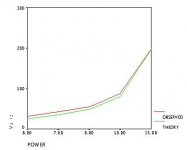elkcub
Silicon Valley, California

henry link said:Ed,
Check out this DOF thread from Cloudy Nights. It has plenty of math to chew on. Note that I took a position on DOF and focal ratio similar to yours until I was set right by Jean-Charles Bouget and Holger Merlitz.
http://www.cloudynights.com/ubbthre...4,5,8,9,10&Number=268206&page=0&view=collapse
Today I cooked up another backyard technique for measuring depth of field. I think this one is less subjective.
I placed two identical small glass spheres at different distances, nearly in line with each other. One at about 8m and the other about 20m from my viewing position. The sun reflecting from the spheres produced glitter points. I focused one barrel of a binocular on the distant glitter point, then (without changing focus) moved the closer glitter point to the field center. The size of the out of focus glitter point indicates how far out of focus it is. A smaller circle indicates it's closer to being in focus. So the binoculars with the smallest out of focus circles have the widest DOF. The beauty part is that the size of the out of focus circle is visually quite stable. It's so far out of focus that my eye couldn't even attempt to accomodate to it. You don't have to try to judge whether one binocular is more or less out of focus than another at the closer distance, all that matters is the size of the circle. As for my results. I'll just say that so far they are consistent with magnification as the only important determinant, but I will keep playing with it. I hope others interested in the DOF question will try this and post results.
Henry
Henry,
Thanks for finding the old CN thread. I read it through quickly, and have a general idea where Holger and Jean-Charles are coming from, but I'm not yet able to rationalize their approach with Warren Smith's definition. (Being one of the McGraw-Hill book series Editors I accept what he says as gospel.) Essentially, what it comes down to is this. If the DOF is constant for all binoculars having the same power, then the focal length of the objective should drop out of the defining equation for the DOF of the system. That would constitute a proof in my book. Naturally, empirical measurements should follow theory so long as they are valid, i.e., measure what they should measure.
Blue skies,
Ed
PS. I'm sure you saw EdZ's early posts on the thread.
Last edited:




